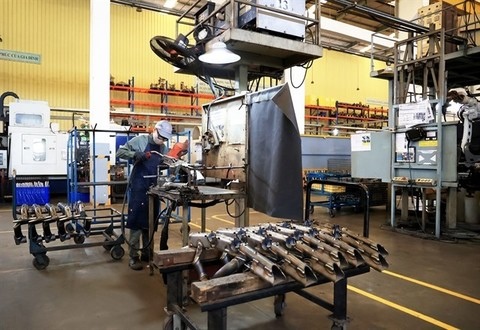According to the report, foreign investment inflows into Việt Nam in the period also saw a modest increase of two per cent to approximately $27.26 billion.
Up to 2,743 new foreign-invested projects were licensed during the period, with a total registered capital of over $12.23 billion, up 1.5 per cent in the number of projects, but down three per cent in capital.
The FIA attributed the slight decline in capital to the fact that new investment projects were small in scale, with a few of them having capital from over $100 million to over $300 million. Meanwhile, in October of 2023 alone, there were three large-scale projects worth between $500 million and $1.5 billion.
At the same time, 1,151 operating projects were allowed to raise their levels of capital by nearly $8.35 billion, up 6 per cent and 42 per cent, respectively.
However, foreign investors’ capital contributions and share purchases recorded a yearly decline of 30 per cent to $3.68 billion, the report said.
From January to October, the manufacturing and processing sector attracted the lion’s share of foreign investment with $17.1 billion, down 14 per cent year-on-year, which is equivalent to 62.6 per cent of the total.
Real estate came next with nearly $5.23 billion, nearly three times higher than last year’s corresponding period or capturing 19.2 per cent of the total. Electricity production and distribution ranked third with $1.12 billion, followed by wholesale and retail with nearly $1 billion.
Among 106 countries and territories investing in Việt Nam, Singapore took the lead with over $7.79 billion, up 61 per cent year-on-year and making up 28.6 per cent of the total foreign investment pledged in the country.
Mainland China followed with over $3.61 billion, up 5.4 per cent and accounting for 13.3 per cent of the total. Other major foreign investors were mainland South Korea, Japan and Hong Kong. But China ranked first in terms of the number of projects over the 10-month period, accounting for 28.8 per cent of the total.

A foreign-invested firm in Đồng Nai Province. — VNA/VNS Photo Hồng Đạt |
The FIA said that foreign investment was still focused on ten provinces and cities, those with advantages in attracting foreign investment including good infrastructure, stable human resources, efforts to reform administrative procedures and effective investment promotion.
The ten were Bắc Ninh, TP HCM, Quảng Ninh, Hải Phòng, Bà Rịa – Vũng Tàu, Bình Dương, Hà Nội, Đồng Nai, Bắc Giang and Ninh Thuận, accounting for 80 per cent of the country’s total number of foreign-invested projects and 71 per cent of registered capital.
Of them, Bắc Ninh was the largest recipient with $4.7 billion or 17.2 per cent of the total investment registered in the country in the period.
HCM City and Quảng Ninh were the runners-up with $2.1 billion or 7.7 per cent and $1.98 billion or 7.2 per cent, respectively.
According to the agency, the ten-month export turnover of the foreign-funded sector, including crude oil, was estimated at over $242 billion, up 13 year-on-year, accounting for 72.1 per cent of Việt Nam’s total export revenue.
The sector recorded a trade surplus of nearly $42 billion, including crude oil, and over $40.8 billion without crude oil. This surplus helped offset the domestic sector’s trade deficit of nearly $19.4 billion.






















